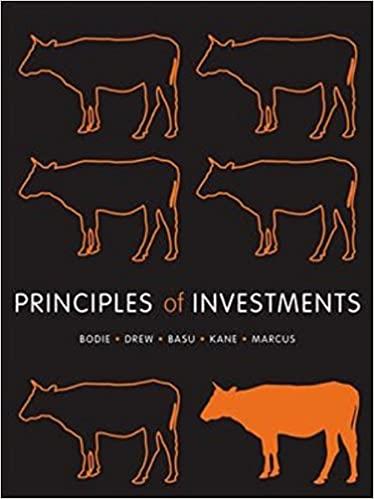Question
Select a publicly traded company and do the following: 1. Provide background information on the company and describe the market in which the company operates
Select a publicly traded company and do the following:
1. Provide background information on the company and describe the market in which the
company operates in and its main products.
2. Determine key macroeconomic and industry-wide factors impacting the firm.
3. Compute and interpret the financial ratios described below for a five-year period. Look at the
trend in the ratios to determine if they are deteriorating or improving and compare them
against peers or the industry:
- Current and quick ratios and net working capital
- Inventory turnover, fixed assets turnover and total assets turnover
- Debt ratio and TIE.
- Gross profit margin and net profit margin and operating margin EBIT
- ROE and ROA
- Price/ Earnings and Market/Book
- Du Pont Analysis
- Free Cash flow analysis
- EVA and MVA
4. Find beta for the firm using the regression procedure found in Excel. Use 60 months of
return data for the calculations. In a regression, where y = a +bx, you estimate the values of
a and b. In this case, you regress the return on the companys stock vs the return on the
market, measured by the S&P 500. In the regression, the y variable is the return on the
stock and the x variable is the return on the market. Given the estimated value of beta,
calculate the companys required return using the SML.
5. Find the value of g used in the DDM model using two approaches.
First, calculate g by using the accounting relationship g = ROE times the retention
rate. Calculate a value for g for each of the last 3 years by multiplying the ROE by the
retention rate and then take an average of the 3 years.
6. Second, estimate the 5 and 10-year historic growth rate in earnings. Alternatively, using a
regression approach, regress the ln (EPS) (y variable) versus a time variable using 5 to 10
years of annual data. The coefficient on the time variable is an estimate of the growth rate
(g). Thus, the regression equation is given by:
Ln(EPS) = a + b (time) where the value of b = g or the growth rate in earnings/dividends
and Ln is the natural log.
Use the regression procedure found in Excel to estimate the equation. The time variable will
take on values of 1 through 5 for 5 years of data and 1 through 10 for 10 years of data. Using
more data observations will give you better statistical results.
Compare the 5-year and 10-year growth rates to the growth rate calculated using the
accounting method.
7. Estimate the intrinsic value (price) for the stock using the 1) dividend discount model (DDM)
approach assuming constant growth and the 2) P/E multiplier approach. Make a buy or sell or
hold recommendation.
P/E ratio x estimated earnings = estimated price
Earnings estimate = current EPS times (1+g) use the P/E ratio for the selected companys
industry
8. Evaluate stock using value criteria of price to sales and price to book
9. Estimate the cost of capital for the company using different estimates for the cost of equity.
Step by Step Solution
There are 3 Steps involved in it
Step: 1

Get Instant Access to Expert-Tailored Solutions
See step-by-step solutions with expert insights and AI powered tools for academic success
Step: 2

Step: 3

Ace Your Homework with AI
Get the answers you need in no time with our AI-driven, step-by-step assistance
Get Started


